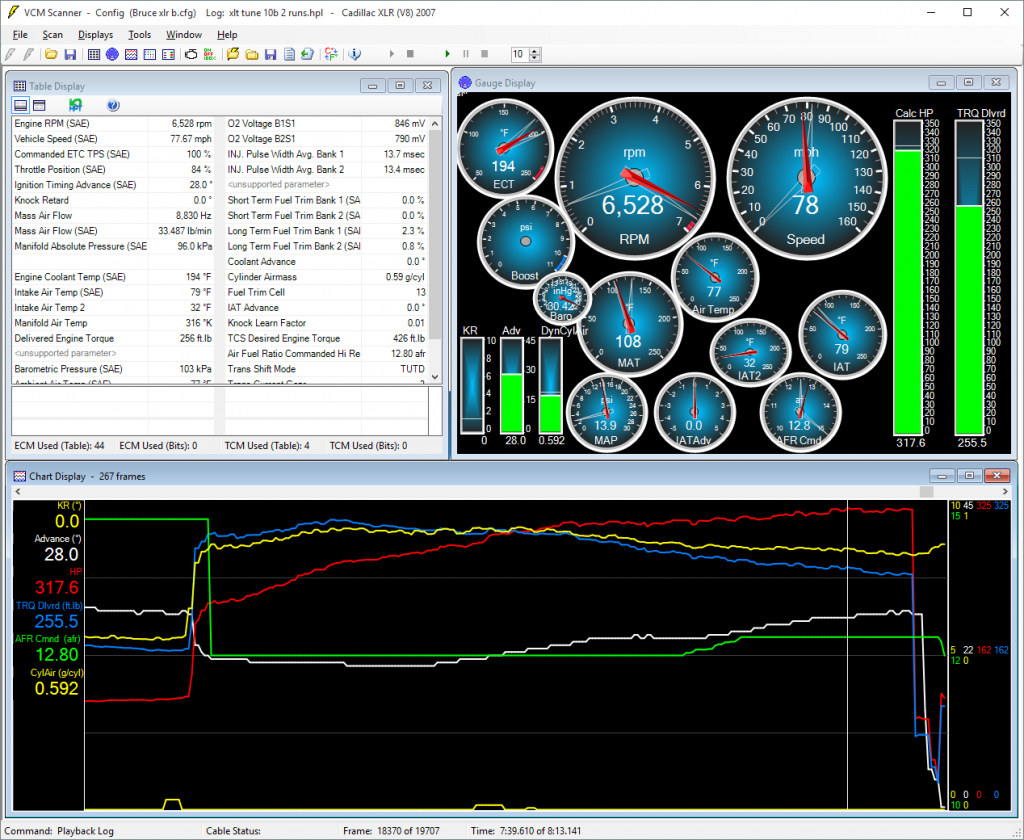Tune 10a reduced the timing advance from Tune 9B across much of the range to sync up with the MBT timing in the appropriate cyl air ranges.
That was the plan at least — it turns out I didn’t account for static retard, which is a per-cylinder retard programmed in at the factory in certain RPM ranges. On average that reduced the timing at redline by almost a degree. I also halved the IAT adder multiplier from 6000-6800, so we were missing 1.6 degrees there. So instead of running 30 degrees at 6800 I ended up flatlining at 27 degrees from 6400-6800.
Overall Tune 10 was a good result, in that it continued to show no KR and showed that we can get equivalent results with less timing, which leads to locking our KR.

The dark blue and red lines are hp and torque on the left axis; the other lines are test result advance, test result KR (green at bottom), MBT advance (goal timing in maroon), and Tune 10B advance planning in light blue.
I was missing a degree of advance til 6000 then around 3 degrees by 6700.

The Virtual Dyno runs were in a range, at 264, 266, 271, 274 whp. The red line at 266 whp is for the same calculated data in the first graph; 266 whp / 0.8 trans losses = ~332.5 hp.

This is my worksheet to consider the MBT timing based on the cyl air pressure ranges, what the engine is currently doing in the test, and what I would like it to do in the next tune 10B.

The HPTuners graph suggests that power was increasing in step with timing advance until the timing went flat at 27 degrees at 6400 rpm. I am hoping that if the timing continues up to 30 degrees at 6800 rpm as suggested in the MBT table then we will see an increase in power above 6400 rpm.
Suggestions, corrections, or discussion welcome — hit the comments!










